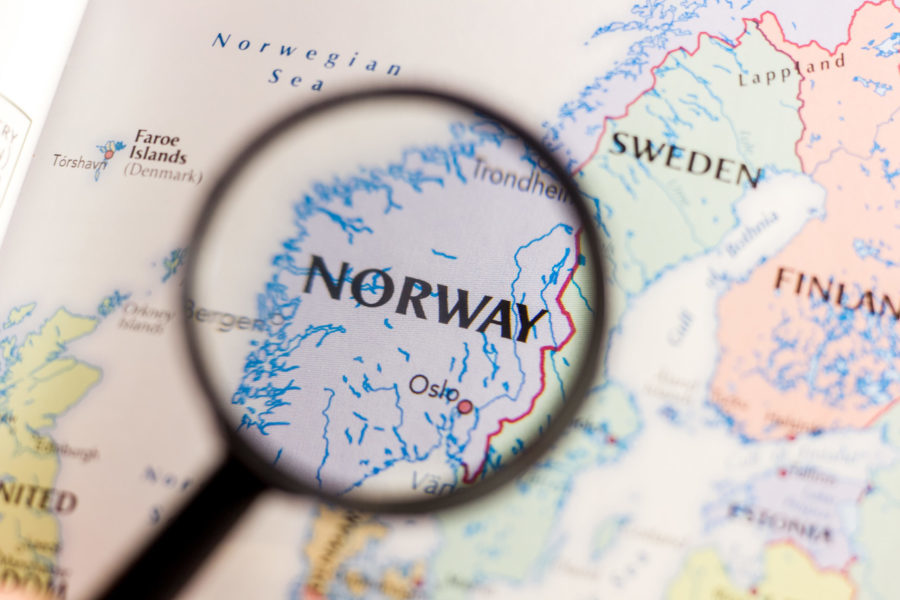Norway is a country of immense natural beauty that attracts visitors from around the world. In addition to its stunning fjords and remarkable islands dotting the lengthy Atlantic coastline, Norway is famous for its northern lights during wintertime and midnight sun in the summer. Lately, Norway has begun attracting a new kind of visitor: medical tourists. Medical tourism is growing in Norway due to low cost diagnostics, like MRIs and CT scans, and its highly qualified medical doctors and staff.

Healthcare in Norway
Norwegian healthcare is provided to all citizens by the government. Visits to healthcare providers are usually subsidized and patients pay only a small fee, though private insurance exists for citizens who want more freedom to choose a healthcare provider.
Eye exams for children under 16 are at no-cost through public health coverage, but regular vision care for most adults is not. However, care for low vision patients and adults over the age of 50 is subsidized.
Optometric Education
In Norway, the terms “optician” and “optometrist” are used interchangeably to refer to a primary eye care provider. This is very different than in the United States and Canada, where an optician may or may not be licensed, while practicing optometry requires a doctoral degree in addition to undergraduate studies.
The University of South-Eastern Norway is the country’s only institution for optometric education. A three-year bachelor’s degree is the entry level requirement to practice optometry.
Those who want to specialize or have additional training can choose from two master’s degrees: Master’s of Vision Pedagogy and Visual Rehabilitation, which trains candidates in the care of low vision patients, or Master’s in Optometry and Visual Science (MOVS). A MOVS degree offers two tracks of study as well. Students can specialize in general practice optometry or they can focus on orthoptics and pediatric optometry. Depending on the chosen track, candidates can take courses in contact lenses, anterior and posterior segment disease, and vision training.
The University of South-Eastern Norway offers a PhD in Person-Centered Healthcare for optometrists and other healthcare providers. The program is cross-disciplinary, and graduates are qualified to conduct research projects in healthcare.
Norwegian Optometry
The country is home to 2.88 optometrists per 10,000 of the population. Optometrists provide more than 75% of refractions and primary eye care in Norway. Optometrists prescribe and fit eyeglasses and contact lenses for adults and children.
Compared to most European countries, Norwegian optometrists enjoy a broad scope of practice. They are recognized as experts on procedures such as tonometry, perimetry, and ophthalmoscopy. They use diagnostic drops and dyes for examination and can dilate the eye to check ocular health. While they are qualified to detect ocular pathology, optometrists cannot prescribe therapeutic drugs like antibiotics and topical steroids.
There is also a Norwegian Opticians’ Association dedicated to support, safeguard, and advance the optometric profession in Norway.
Low Vision Care
The Norwegian Association of the Blind and Partially Sighted (NABP) provides education and services to visually impaired citizens. They promote equality for the visually impaired and individuals with other disabilities.
The organization is also involved in international outreach. They support projects in nine African and Asian countries. With the aid of the NABP, more than 200,000 eye operations have been provided to patients in needy countries. Through their projects, the NABP promotes organization building, education, eye health, and rehabilitation.

The neighboring Scandinavian countries of Sweden, Denmark, and Finland are part of the EU. Optometrists in these countries earn either a bachelor’s or master’s degree in optometry and vision science. However, only the country of Sweden has as broad a scope of practice as Norway. Danish and Finnish laws are more restrictive.
Optometry is an established healthcare profession in Norway. Optometrists provide primary eye care to the population and refer to ophthalmologists when there is a need to treat ocular disease.
Special thanks to Ellen Svarverud from the University of South-Eastern Norway for her help with this information.

